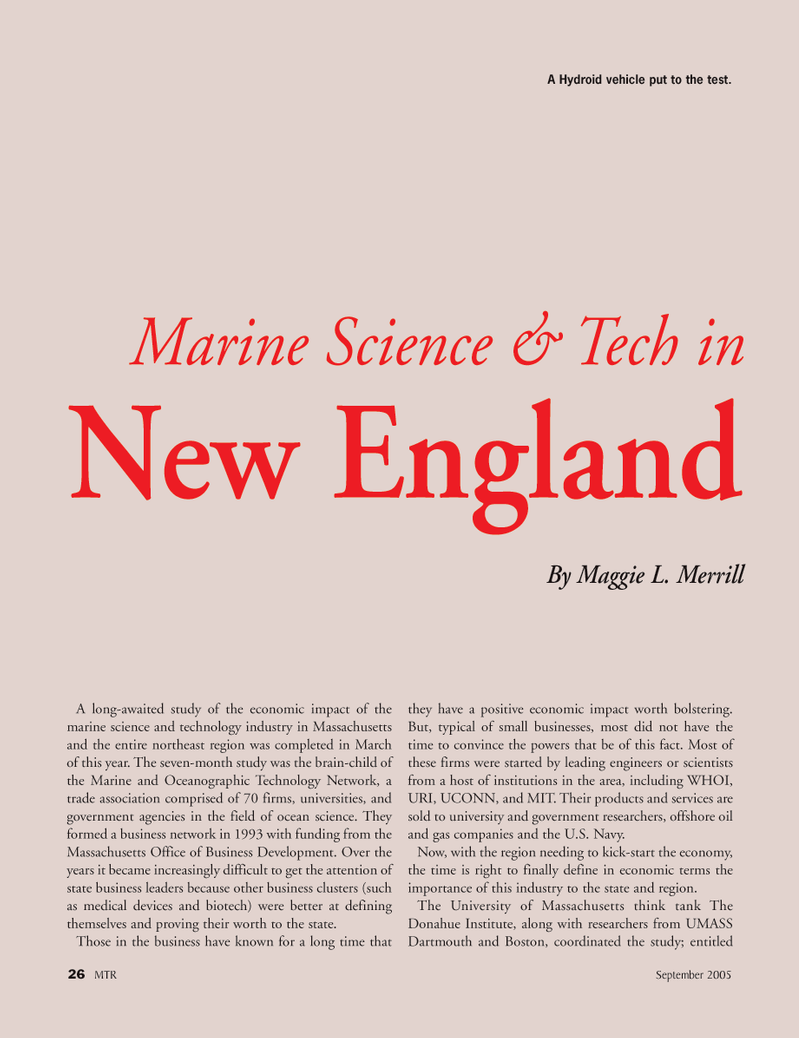
Page 26: of Marine Technology Magazine (September 2005)
Maritime Security & Undersea Defense
Read this page in Pdf, Flash or Html5 edition of September 2005 Marine Technology Magazine
26 MTR September 2005
A long-awaited study of the economic impact of the marine science and technology industry in Massachusetts and the entire northeast region was completed in March of this year. The seven-month study was the brain-child of the Marine and Oceanographic Technology Network, a trade association comprised of 70 firms, universities, and government agencies in the field of ocean science. They formed a business network in 1993 with funding from the
Massachusetts Office of Business Development. Over the years it became increasingly difficult to get the attention of state business leaders because other business clusters (such as medical devices and biotech) were better at defining themselves and proving their worth to the state.
Those in the business have known for a long time that they have a positive economic impact worth bolstering.
But, typical of small businesses, most did not have the time to convince the powers that be of this fact. Most of these firms were started by leading engineers or scientists from a host of institutions in the area, including WHOI,
URI, UCONN, and MIT. Their products and services are sold to university and government researchers, offshore oil and gas companies and the U.S. Navy.
Now, with the region needing to kick-start the economy, the time is right to finally define in economic terms the importance of this industry to the state and region.
The University of Massachusetts think tank The
Donahue Institute, along with researchers from UMASS
Dartmouth and Boston, coordinated the study; entitled
Marine Science & Tech in
New England
By Maggie L. Merrill
A Hydroid vehicle put to the test.
MTR#2 (17-32).qxd 8/30/2005 5:09 PM Page 26

 25
25

 27
27
